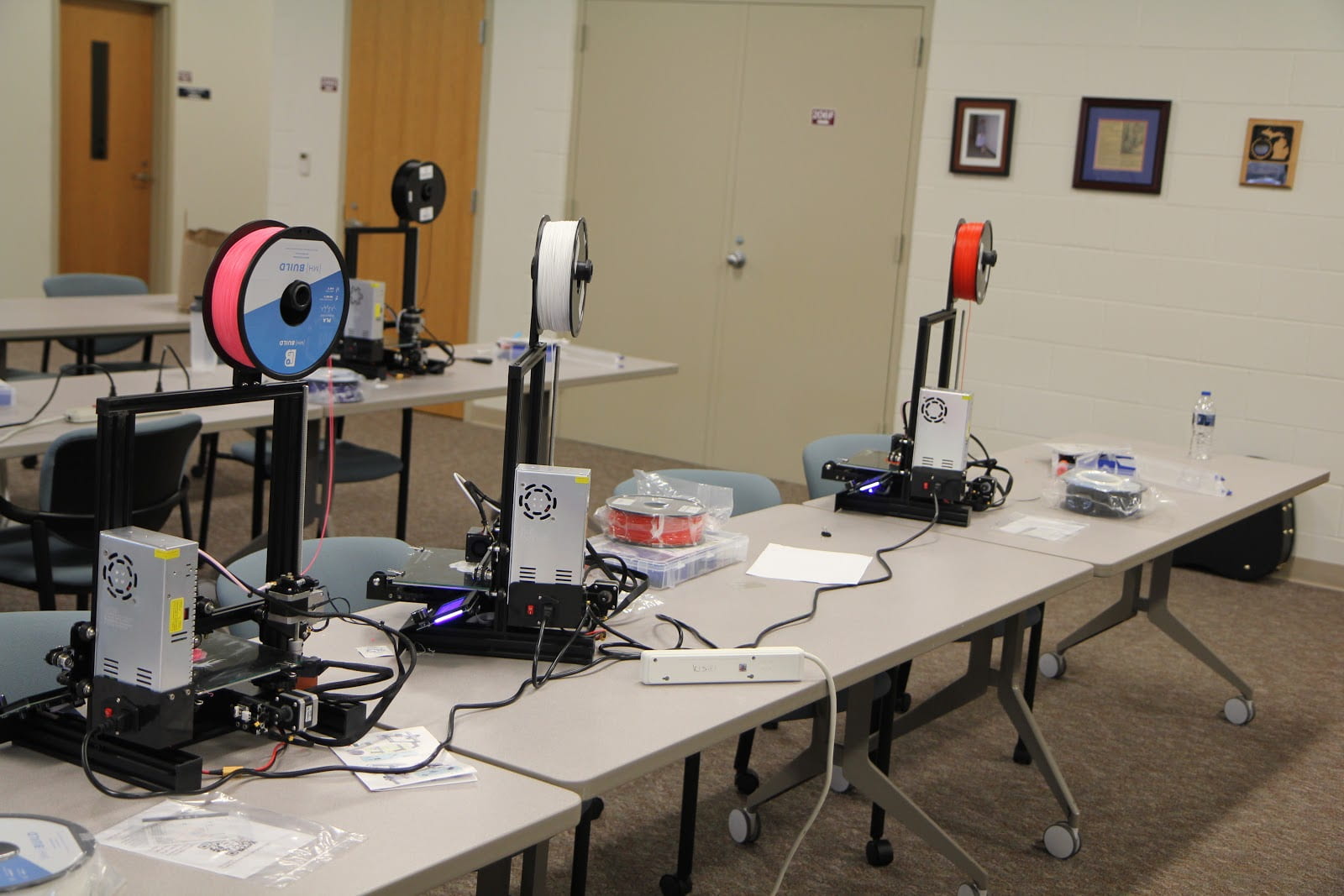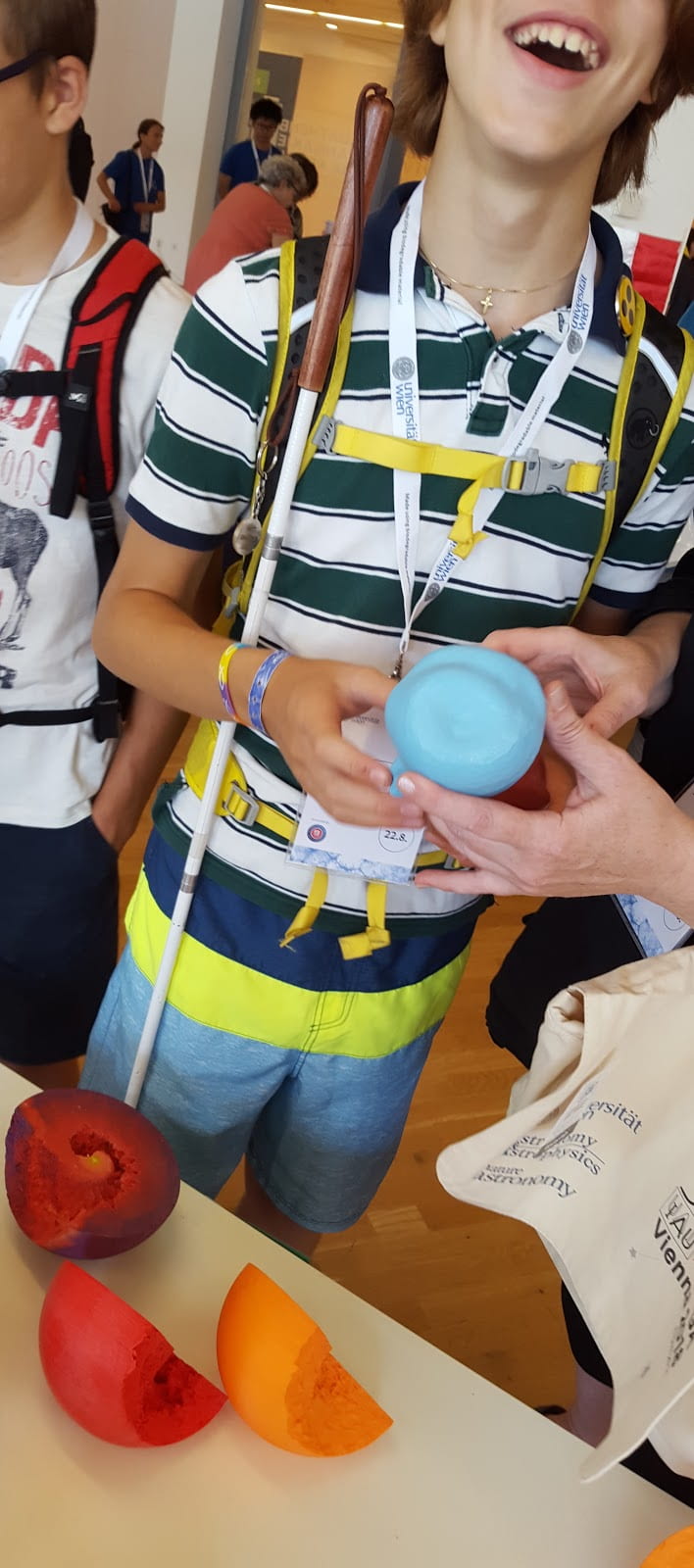
A student explores a 3D printed tactile model of the constellation Orion. The spherical stars have diameters that represent their true relative brightnesses and are attached to posts whose lengths indicate the stars’ true relative distances from the Earth. Photo: Professor Thomas Madura/San José State University.

3D printers assembled by students with VI at the Bureau of Services for Blind Persons in Kalamazoo, MI. Photo: Professor Thomas Madura/San José State University.
Researchers from San José State University, The Ohio State University and the Space Telescope Science Institute (STScI) located at John Hopkins University have been awarded a $1.5 million dollar Innovative Technology Experiences for Students and Teachers (ITEST) grant from the National Science Foundation (NSF) to develop science, technology, engineering and mathematics (STEM) curricula for students with blindness and visual impairments (VI).
The funding will be used to research and develop STEM Career Exploration Labs (CELs) where students with VI can learn about STEM, career opportunities in STEM and develop STEM skills.
“Students will participate in hands-on activities such as assembling and using desktop 3D printers and using 3D printed models and sound to learn astronomical topics, such as celestial motion and lunar phases,” said Principal Investigator and San José State University Assistant Professor Thomas Madura. “Spatial thinking is particularly important for students with VI, who touch their surroundings and gather information via sound to form mental images and make sense of the world.”
The STEM Career Exploration Labs will also include interactions with STEM professionals with VI and field trips to local businesses that offer insights into STEM careers. The CELs will serve high school students from ages 14 to 20 with VI, their sighted peers, STEM high school teachers and teachers of the visually impaired. The Council of Schools for the Blind will help recruit students and teachers for the program.
Previously, researchers conducted two pilot workshops including one in Kalamazoo, Michigan, with the Michigan Department of Licensing and Regulatory Affairs’ Bureau of Services for Blind Persons and the South Carolina Commission For the Blind in Columbia, South Carolina.
“In the workshops, the students explored current research data obtained with NASA’s Hubble Space Telescope through 3D prints,” said Hubble Space Telescope Outreach Project Scientist at STScI Dr. Carol Christian. “The use of such tactile materials allows students to discover the wonder as well as some of the scientific detail of the astrophysical universe.”

A student explores a 3D printed model of the Eta Carinae Homunculus nebula created using observations obtained from the European Southern Observatory’s telescope in Chile. Photo: Professor Thomas Madura/San José State University.
According to Assistant Professor Thomas Madura, there is very little research to date on how students with VI learn science and fewer studies on the impact of technological tools designed for students with VI. Researchers will collect and provide new data by investigating:
- The effect on students with VI’s understanding of scientific concepts
- How students participate in the inquiry-based STEM work
- How the project affects student attitudes towards STEM, STEM careers, and astronomy
- Assess understanding of spatial thinking skills and astronomy concepts
- Identify STEM high school teachers’ attitudes towards students with disabilities in STEM classes
Data results will be distributed in a variety of ways, including peer-reviewed research journals, presentations, and workshops at various STEM, astronomy, VI, education, 3D printing, persons with disabilities and related domestic and international conferences.
“We know very little about how persons with visual impairments understand abstract concepts, such as astronomy, as they are presented through 3D models,” said Project Researcher and Associate Professor at The Ohio State University Tiffany Wild. “The results of this research can impact the way we teach astronomy to students with visual impairments and ultimately increase accessibility for all those with visual impairments to the world of astronomy.”
Depending on the current COVID-19 pandemic, researchers plan to set up STEM Career Exploration Labs in public high schools, schools for the blind, and state agencies in 12 states beginning in spring 2021.
